Independence and Contradiction: Our Founding Slaveholders
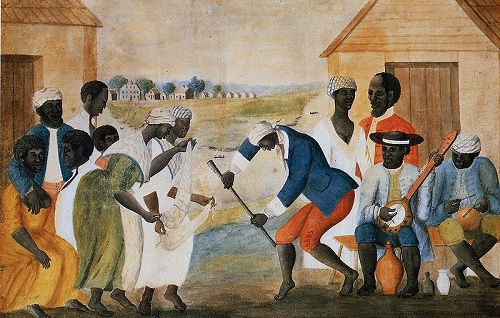
The Old Plantation, ca. 1790-1800. en:Watercolor by unidentified artist.
Original painting in Abby Aldrich Rockefeller Folk Art Museum, en:Williamsburg, Virginia.
A new exhibit titled “Slavery at Jefferson’s Monticello: Paradox of Liberty” will be running at the Smithsonian’s American History Museum from January 27, 2012 - October 14, 2012. This exhibition explores slavery and enslaved people in America through the lens of Jefferson’s plantation and is a collaborative effort between the Thomas Jefferson Foundation at Monticello and the African American History and Culture Museum here in DC. The paradox of course is that Thomas Jefferson drafted the Declaration of Independence and called slavery an “abominable crime,” yet he was a lifelong slaveholder. The exhibition provides a glimpse into the lives of 6 slave families living at Monticello and reveals how the paradox of slavery in Jefferson’s world is relevant for generations beyond Jefferson’s lifetime.
Of course Jefferson is not alone in this regard. Four of the first five presidents (three of them, ‘officially’ recognized Founding Fathers) of the United States were lifelong slaveholders. In an age inspired by the Declaration of Independence, slavery was incredibly pervasive as 28% of the American population was enslaved in 1790. There was a time, not so long ago, when the issue of slavery was glossed over when presenting the lives and legacies of the nation’s Founders. Today, it is recognized as a vital part of what made up their complicated and contradictory lives and many historical sites, to include Monticello, Mount Vernon, and Montpelier are working diligently to include the enslaved African experience in their interpretations. Here is a brief overview:
George Washington
Estate: Mount Vernon
Est. Slaves: 216 +/-
“I hope every necessary care and attention was afforded him. I expect little from (Overseer) McKoy, or indeed from most of his class, for they seem to consider a Negro much in the same light as they do the brute beasts on the farms, and often treat them as inhumanely.” – G. Washington, 1794
When George Washington took over the Mount Vernon estate at age 22 there were approximately 18 documented slaves on the premises. After his marriage to Martha Dandridge Custis he gained control of 200 more slaves which technically belonged to the estate of his wife’s first husband. By 1786 Washington claimed 216 slaves. While he was serving as president in Philadelphia a Pennsylvania law was passed freeing slaves whose owners had been citizens of the state for six months. Washington promptly sent his two most valuable slaves home, telling them it was for his wife’s convenience. In 1796 Oney (or Ona) Judge ran away to New Hampshire. She was one of the Washington family’s most valued slaves and Martha’s personal servant. The then President Washington asked the Treasury Secretary and a customs agent for help in getting her back, supposedly by force if necessary, but she never returned. When he left the presidency Washington is said to have left some house slaves behind in Philadelphia, knowing that under state law they would be quietly freed by having spent a certain amount of time in Pennsylvania. Following his death in 1799 his will called for his manservant William Lee to be freed immediately, and given a pension. All other Washington-owned slaves were to be freed when his widow died. Martha however chose to free them two years later. According to Abigail Adams this was because she feared her life might be in danger, since her death meant freedom for the slaves. Neither Washington nor his wife could legally free the dower slaves which still belonged to the Custis estate.
Thomas Jefferson
Estate: Monticello
Est. Slaves: 141 +/-
“I advance it therefore as a suspicion only, that the blacks, whether originally a distinct race, or made distinct by time and circumstances, are inferior to the whites in the endowments both of body and mind.” – T. Jefferson, 1787
Thomas Jefferson inherited many slaves who lived and worked on Mulberry Row at his mountaintop estate at Monticello. His wife had brought a dowry of more than 100 slaves, and Jefferson went on to purchase many more throughout his life. At some points he was one of the largest slave-owners in Virginia. In 1790 Jefferson gave his newly married daughter and her husband 1,000 acres of land and 25 slaves. In 1798 he claimed 141 slaves, many of them elderly. Two years later he only owned 93. One of Jefferson’s slaves was a young house girl named Sally Hemings, allegedly the half-sister of his deceased wife. During his presidency a rumor appeared in print that she was his mistress. Jefferson vehemently denied this story, which was also passed on as Hemings family tradition. The youngest of Heming’s six children (and the only one whose paternity can be traced through DNA) definitely descended from the Jefferson line, presumably either through him, his brother Randolph, or one of Randolph’s sons. All were in the vicinity of Sally during each period of conception. Jefferson eventually freed one of Heming’s children and allowed another to run away unpursued. Both of them were light enough to successfully pass for whites. He also freed five slaves in his will, all members of the Hemings family. Surprisingly, Sally was not among them. Due to the immense debt that he had accumulated, over 130 slaves were sold when Jefferson’s estate was auctioned off. His daughter Martha freed Sally Hemings a few years later.
James Madison
Estate: Montpelier
Est. Slaves: 66 +/-
“But we must deny the fact that slaves are considered merely as property, and in no respect whatever as persons. The true case is, that they partake of both these qualities; being considered by our laws, in some respects, as persons, and in other respects, as property.” – J. Madison, 1788
As another Virginia planter – turned politician James Madison grew up in a slave-owning family and owned slaves all his life. From 1723 to 1844, during the Madison family’s ownership, hundreds of African and African-American slaves called the family estate at Montpelier home. Five, six, and possibly seven generations of African Americans were born into slavery at Montpelier. The Madisons were not the only residents of Montpelier, but they were the masters of the land and its enslaved people. Enslaved individuals also served in many domestic capacities, such as cooks, gardeners, butlers, and maids. In 1769, when Madison Jr., went away to the College of New Jersey in Princeton, he took a “personal servant” with him, a slave named Sawney. Sawney remained with the Madisons through his life, and in the 1820s is mentioned in letters and a journal as waiting on “Mother Madison.” In the prime of his life, Sawney worked as overseer of a Montpelier quarter (larger plantations were often subdivided into two or more “quarters,” each with its own overseer and labor force), called “Sawney’s tract” or “Sawney’s.” Later in life, Sawney often sold Nelly and Dolley Madison produce, eggs, and chickens from his own small plot of land. In 1833 Madison sold several of his farms but not his slaves. A year later he sold 16 slaves to a relative - with their permission. Madison did not free his slaves in his will.
NOTE: Other slaveholding presidents include: James Monroe, Andrew Jackson, Martin Van Buren, William Harrison, John Tyler, James Polk, Zachary Taylor, Andrew Johnson and Ulysses Grant.
Sources:
Rob Lopresti,”Which U.S. Presidents Owned Slaves?”
James Madison’s Montpelier, The Enslaved Community
The Thomas Jefferson Foundation @ monticello.org
Posted by ny5/pinstripepress
at 8:01 AM EST
Updated: Wednesday, 30 November 2011 9:29 AM EST
Permalink |
Share This Post
Op-Ed: Dumbing down our history = Dumbing down our kids
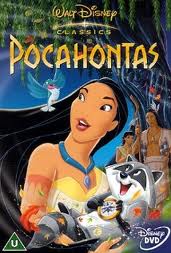 As the father of four children, I find myself incredibly agitated with the false history that continues to be propagated in our elementary schools generation after generation. This includes the falsified study of the discovery and founding of our republic, as well as our nation’s treatment of minorities and indigenous peoples.
As the father of four children, I find myself incredibly agitated with the false history that continues to be propagated in our elementary schools generation after generation. This includes the falsified study of the discovery and founding of our republic, as well as our nation’s treatment of minorities and indigenous peoples.
For some reason, educators “back in the day” felt that it was necessary to present a fictionalized version of American history. This could have been done for a variety of reasons to include the dissemination of political propaganda in the pursuit of national pride. Another reason may have been to hide the more shameful aspects of our past such as the practice of racism and genocide. The “dumbing-down” of curriculum is certainly a contributing factor and the ever-popular celebratory history (in which we present our subjects as colossal heroes) can also share some of the blame. Unfortunately these falsehoods have become so embedded in our pop-culture they are unlikely to change anytime soon. (Thanks Disney...)
What I find most disturbing is that fact that we know this is bulls**t, yet we continue to allow the teaching of the same candy-coated folktales to our kids. I vividly recall being subjected to these fairy tales as a child and how surprised I was when I grew old enough to comprehend the truth. Only then was I was able to truly understand where my country came from and how we got here. In retrospect, these fabrications did nothing but prohibit my learning. In case you may have forgotten, here are some of the most frequent lies that were, and still are, taught in our nation’s elementary schools:
The story of Pocahontas: As children, we are taught that Pocahontas was a happy Powhattan Indian princess who saved Captain John Smith’s life and later fell in love with him. The truth is that Pocahontas was only twelve years-old at the time that The Virginia Company arrived in the New World. She was kidnapped by the English during Anglo-Indian hostilities in 1613 and held for ransom. She later married a tobacco planter named John Rolfe and died of unknown causes (some believe due to the exposure of white man’s germs). There are no accounts of her ever saving the life of John Smith. Oh, and as with most Native American tribes, the Powhattan people were later run off of their own land. To this day, active members of the Virginia Powhattan Tribe do not participate in any events commemorating the history of Jamestown.
Of course there are a multitude of lies being taught about the Founding Fathers: Benjamin Franklin discovered electricity by flying a kite in a lightning storm and, subsequently, getting struck by lightning; America was founded to be a Christian nation; and George Washington chopped down his father’s cherry tree and later confessed to it. The truth is that Franklin would have been killed had the experiment gone the way it is presented, the Founding Fathers represented a variety of religious and secular preferences and would never have instituted a national stance on religion, and George Washington never chopped down a cherry tree and probably told plenty of lies in the pursuit of land and power. Of course the slave owner issue is also glossed over when discussing the lives of Washington and his fellow Virginia planters Thomas Jefferson and James Madison.
Thomas Jefferson wrote the Declaration of Independence (by himself): Pauline Maier published a remarkable book in 1997 that uncovered ninety state and local “declarations of independence” that preceded the famous congressional document. According to the History News Network, “The consequence of this historical tidbit is profound: Jefferson was not a lonely genius conjuring his notions from the ether; he was part of a nation-wide conversation. Again, textbook writers have watered down the legend while missing the main point. While many textbooks now state that Jefferson was part of a five-man congressional committee, but do not mention a word of those ninety documents produced in less famous chambers.”
Paul Revere’s “Midnight Ride” is another example of one person receiving credit for the efforts of many: Historian David Hackett Fischer published a deconstruction and reconstruction of Paul Revere’s Ride in 1996 and proved that Revere was not acting alone. According to Fischer Revere was part of an intricate network of patriots who all rode horses, rang bells, and shot guns to sound the warning. Fischer’s book was so popular that textbook writers had to deal with this new information: Revere was not alone, they now admit — William Dawes (and sometimes Samuel Prescott) rode as well. They water down the legend, but they do not embrace the real impact of Fischer’s findings: the mobilization of April 18-19, 1775, was a truly collaborative effort involving an entire population.
These are just a few of the more prevalent fabrications that are frequently taught in regards to early American history. The truth is that this kind of fictional content saturates our textbooks all the way up to the 20th-century. So how do we deal with this? Obviously schools are going to continue to teach the content that is required of them at the state and national level, so a radical turnabout in elementary education is unlikely. Therefore change must be implemented at the parenting level.
My recommendation is not that radical and does not require a degree in education: Let’s simply give our children some credit and tell them the truth. Their reaction may surprise us.
Upcoming articles
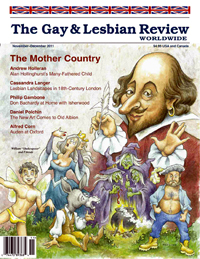 This weekend I contacted the editors at the Gay and Lesbian Review Journal of History for possible publication of my article: Exploring the Sexuality of a Founding Father: Gay history in the classroom and how it may reshape how we think about our past. This 3,500 word essay deals with questions surrounding the sexual preferences of Alexander Hamilton, as well as the adoption of SB48 in California's classrooms.
This weekend I contacted the editors at the Gay and Lesbian Review Journal of History for possible publication of my article: Exploring the Sexuality of a Founding Father: Gay history in the classroom and how it may reshape how we think about our past. This 3,500 word essay deals with questions surrounding the sexual preferences of Alexander Hamilton, as well as the adoption of SB48 in California's classrooms.
I was very lucky to get some excellent insights from the gay community and I could not be more excited about the potential for reaching a new audience. I also have an article set for an upcoming issue of Patriots of the American Revolution titled: The Devout Beliefs of an Unbeliever: Thomas Paine’s Age of Reason which presents the secular views of Thomas Paine.
Next, I am seriously thinking about writing an Op-Ed about the fraudulent early American history that is being taught in our nation’s schools. A friend and I were discussing my last post on Native American perspectives when he shared this: “History and perception is all too often set by the victors. I HATE the fact that our schools perpetuate the ‘Indians and Pilgrims, sitting at a picnic table, carving meat and pumpkins in perfect harmony’ ideal and teach it as history. What is wrong with a little honesty? I think our children, who are now bombarded with more and more unvarnished bulls**t from modern society, are capable of a little truth. Perhaps that would be a lesson that would teach us all a little more humility.” I couldn’t agree more.
Myths of the Founding Fathers (FULL) - Michael Parenti
"The delegates to Philadelphia wanted a stronger central power that would (a) resolve problems among the thirteen states regarding trade and duties, (b) protect overseas commercial and diplomatic interests, (c) effectively propagate the financial and commercial interests of the affluent class, and (d) defend the wealthy from the competing claims of other classes within the society. It is (c) and (d) that are usually ignored or denied by most historians." - Michael Parenti
Another Point of View
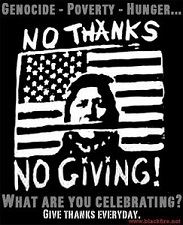 This week historians across the blogosphere have been busy posting the traditional Thanksgiving holiday proclamations of presidents George Washington and Abraham Lincoln. These decrees have become the official “go-to posts” for this week, so I have decided to take another angle…
This week historians across the blogosphere have been busy posting the traditional Thanksgiving holiday proclamations of presidents George Washington and Abraham Lincoln. These decrees have become the official “go-to posts” for this week, so I have decided to take another angle…
Historically speaking, Thanksgiving is a unique holiday as perhaps no other celebration on the American calendar is remembered more inaccurately than it. Storybook visions of the early Pilgrims and Native Americans breaking bread together around a giant cornucopia have been implanted into the minds of children for decades. As adults, we eventually discover that this is propaganda, and that the Indians were not all that welcome at the Puritan’s table. The harsh reality is that Thanksgiving, and most early settler’s history for that matter, is viewed very differently by the Native Americans. In fact, the irony of quoting George Washington’s inspirational decree is that he is accused of ordering atrocities against the very people who we like to think liked us.
According to A Thousand Lies: The Native American (compiled by Dee Finney): In 1779, George Washington instructed Major General John Sullivan to attack the Iroquois people. Washington stated, “lay waste all the settlements around...that the country may not be merely overrun, but destroyed”. In the course of the carnage and annihilation of Indian people, Washington also instructed his general not “listen to any overture of peace before the total ruin of their settlements is affected”. (Stannard, David. AMERICAN HOLOCAUST. New York: Oxford University Press, 1992. pp. 118-121.)
In 1783, Washington’s anti-Indian sentiments were apparent in his comparisons of Indians with wolves: “Both being beast of prey, tho’ they differ in shape”, he said. Washington preferred buying Indians’ land rather than driving them off it because he stated that it was like driving “wild beasts” from the forest. His policies of extermination were also realized in his troop’s behaviors following a defeat. Soldiers are rumored to have skinned the bodies of Iroquois warriors “from the hips downward to make boot tops or leggings.” Indians who survived the attacks later re-named the nation’s first president as “Town Destroyer.” Approximately 28 of 30 Seneca towns had been destroyed within a five year period. (Ibid)
Washington and his friend Henry Knox were also the first to propose the cultural transformation of Indians, referred to as the “Americanization of Native Americans.” In doing so they formulated a policy to quote: “encourage the civilizing process of savage peoples.” This movement led to an assimilation effort by the United States Government to transform Native American culture to European-American culture between the years of 1790–1920.
Like much of our nation’s history, Thanksgiving means many different things to many different people. I prefer to look at the holiday as an opportunity for spending time with our families while reflecting on our blessings with gratitude. At the same time, I also acknowledge that historically speaking, it is a mythical representation of a reprehensible period of American history, and means something entirely different to our Native American neighbors.
Posted by ny5/pinstripepress
at 8:29 AM EST
Updated: Wednesday, 23 November 2011 9:02 AM EST
Permalink |
Share This Post

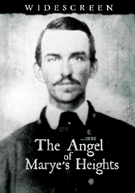
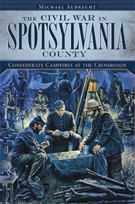
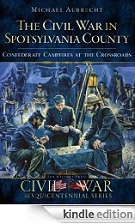

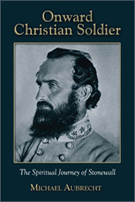

 As the father of four children, I find myself incredibly agitated with the false history that continues to be propagated in our elementary schools generation after generation. This includes the falsified study of the discovery and founding of our republic, as well as our nation’s treatment of minorities and indigenous peoples.
As the father of four children, I find myself incredibly agitated with the false history that continues to be propagated in our elementary schools generation after generation. This includes the falsified study of the discovery and founding of our republic, as well as our nation’s treatment of minorities and indigenous peoples.  This weekend I contacted the editors at the
This weekend I contacted the editors at the  This week historians across the blogosphere have been busy posting the traditional Thanksgiving holiday proclamations of presidents George Washington and Abraham Lincoln. These decrees have become the official “go-to posts” for this week, so I have decided to take another angle…
This week historians across the blogosphere have been busy posting the traditional Thanksgiving holiday proclamations of presidents George Washington and Abraham Lincoln. These decrees have become the official “go-to posts” for this week, so I have decided to take another angle…